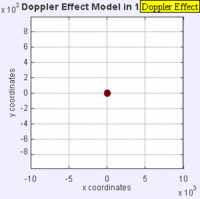When you're dealing with stars and planets thousands of lightyears away from us, you might think that it's impossible to snap a picture. Even if a camera could reach such massive distances, the bright rays from the orbited star would block out the light waves coming from any planet around it. It was this same problem that made Direct Imaging so seemingly impossible for so long.
It wasn't until 2004 that there was really a true breakthrough in the pursuit of getting actual images of planets. A group of scientists in Europe using the Very Large Telescope Array were able to get what many believe to be the first direct image of an extrasolar planet. The planet, which is many times larger than Jupiter, orbits a brown dwarf star much dimmer than our own Sun. This small detail of brightness may seem small but its implications paved the way for the method of Direct Imaging most commonly used today (The Planetary Society).
This idea of trying to detect planets around dimmer stars was strengthened further when a group of astronomers were able to get a direct image of another planet in 2008. The planet was found to be orbiting the star called Fomalhout which is surrounded by a veil of gas and dust. The reason they were able to get a direct image is because the light from the star was partially blocked out (The Planetary Society).
Nowadays, advances in technology have allowed astronomers to manipulate the amount of light received by telescopes from bright stars. This makes the task of getting direct images of extrasolar planets easier. The reduced light can either be blocked out further or just completely removed from the image. This process, while massively further advanced than before, still works best with the largest, and brightest planets, or planets that are quite far from the star in their orbit. This last detail makes Direct Imaging very special, because all of the indirect methods of extrasolar planet detection work better with planets that are close to their stars. This sets Direct Detection apart and makes it an invaluable method for the future of extrasolar planet detection. But that's not the only reason that Direct Ditection is important. We can get information from Direct Detection that is impossible to attain through the indirect methods. A spectrum can only be gotten through the Direct Imaging method, so if we want to continue to search for planets with similar chemical makeups as our own, we must continue using Direct Imaging. The idea of using the light of the planet is also crucial in getting an accurate measurement of the temperature of a planet, using the emission of light that falls under infrared on the spectrum.
Direct Imaging has advanced the possibilities of exploring our galaxy to new heights, heights that would have seemed impossible just a decade ago. Looking forward, into trying to get more Direct Images of planetary systems, the leader in the industry and the next big leap is the Gemini Planet Imager. The new set of optics was added to the Gemini Telescope located in the Andes in 2013, and allows the telescope to obtain Direct Images of planets that are ten million times fainter than the star they are orbitting (gpi Exoplanet Survey). A huge leap for the technology. Below is a planetary system found by Gemini in its first year of use.
(gpi Extrasolar Survey)
(gpi Extrasolar Survey)























